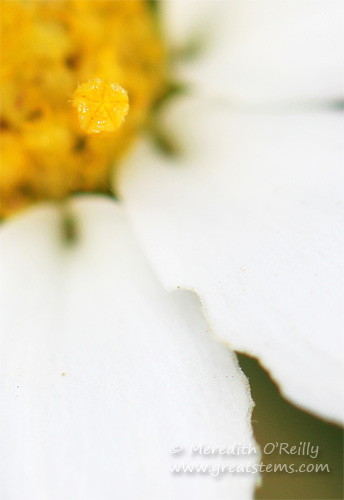As the sun peeked up over the trees this morning, I stepped outside to take delight in the dew-covered garden. The rains this fall have brought about a colorful wave of blooms and greenery.
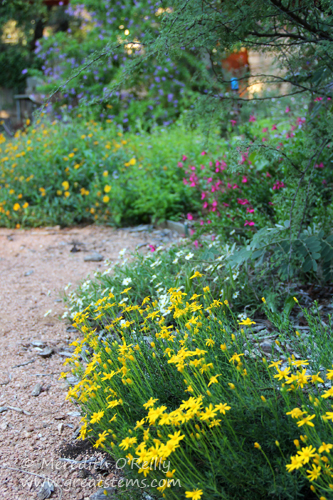
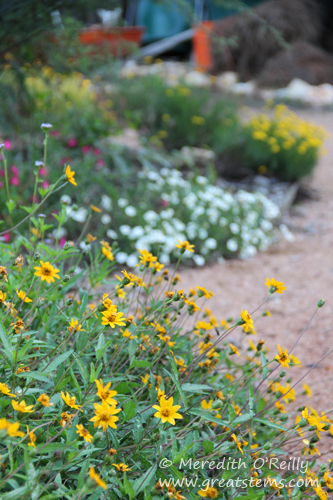
It might not look like it, but this area of my garden gets the worst of the summer sun, with rarely any water from me. This is why I love native Texas plants! They know how to conserve their energy in the summer heat. Then when fall rains come around, they perk up and smile (well, bloom).
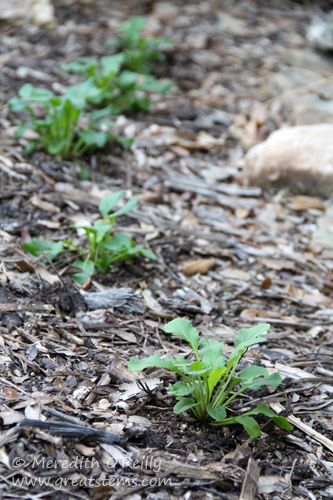
In fact, it’s Texas Native Plant Week right now (October 20-26, 2013). I started the week by getting the rest of my natives planted in the ground, all purchased from the fall Wildflower Plant Sale. I’ve been adding new species to further increase the biodiversity, including Chickasaw Plum, Wild Blue Indigo, Cardinal Catchfly, Foothill Beargrass, Paleleaf Yucca, Green Sotol, Desert Honeysuckle, and others. Above, I’ve planted more Golden Groundsel, a favorite.
The rest of the week, I’ve been helping get lots of native plants to schools in the Austin area. The students are learning about natives such as Flame Acanthus, Skeletonleaf Goldeneye, Purple Coneflower, Shrubby Boneset, Engelmann’s Daisy, and many more. They are also learning about why all these plants are so important for wildlife and for Texas.
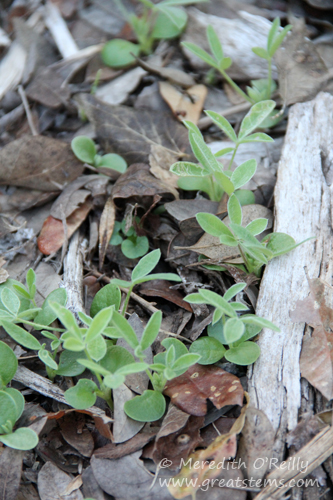
I’ve been spreading the Bluebonnet love, too. So many seedlings are cropping up this fall, far too many for my garden. I’ve given away more than a hundred little transplants already, and I’m helping others give away their excess seedlings, too. The 2nd graders I’m working with absolutely loved planting a bluebonnet garden at their school.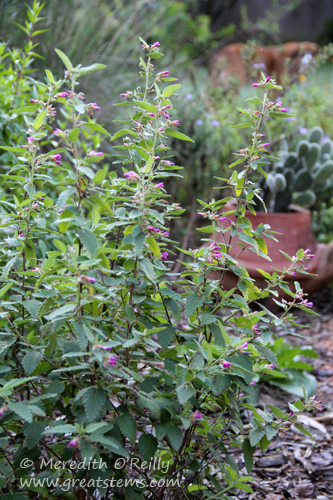
One of my favorite native plants is Pyramid Bush (Melochia tomentosa), a sweet little shrub I purchased at the Wildflower Center last year. In the early morning, the flowers are all closed up.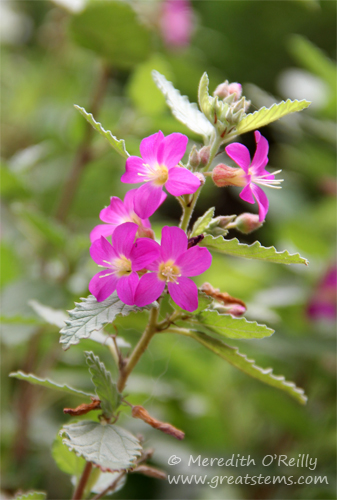
But in the warmth of the day, the blooms open, proving a touch of pink to the garden.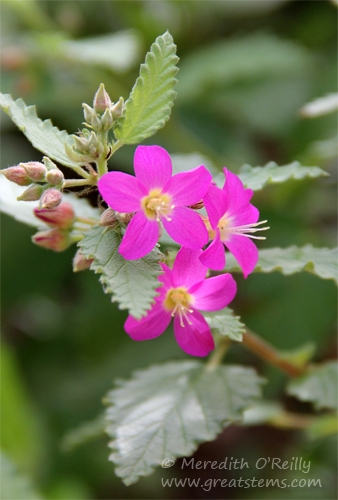
Don’t let the dainty flowers fool you — this plant is a hardy survivor, taking on the full summer sun without needing much water.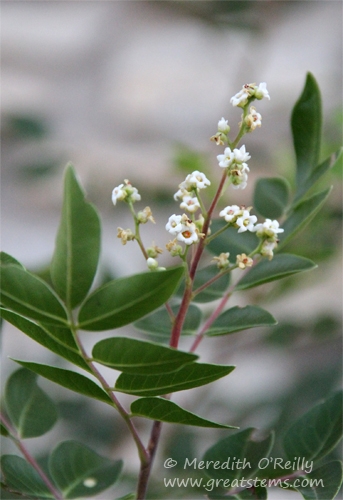
Elsewhere on our property, the Evergreen Sumacs are in bloom. Berries will soon follow.
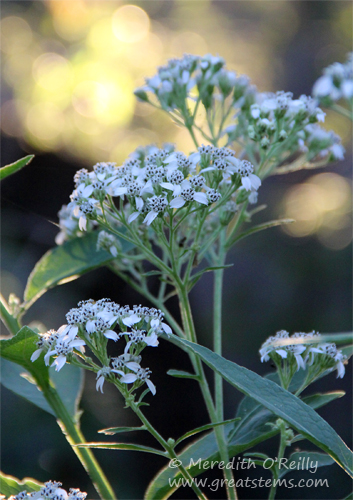
The Frostweed is tall and in full bloom, too, looking extra lovely when backlit by the morning sun.
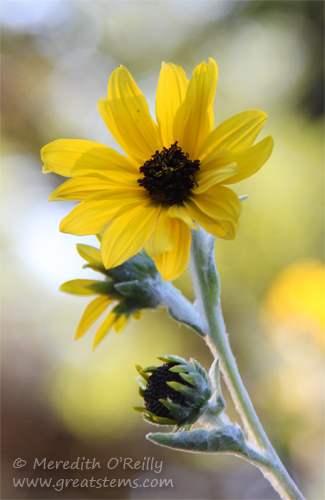
The sun’s early morning lighting also highlighted another tall flower, a Silverleaf Sunflower.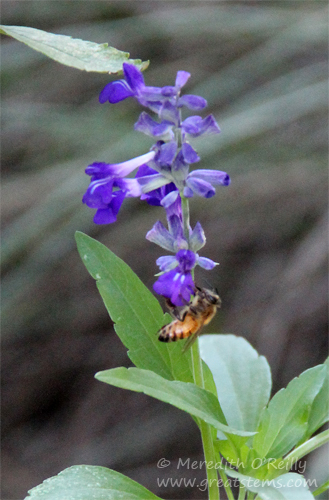
This little honeybee was the first pollinator of the cool, early morning. First come, first served! Clever little bee… or at least a very hard worker.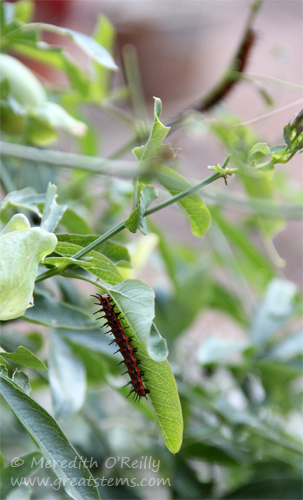
The Gulf Fritillary caterpillars are hungrily eating up the Passionvine. We have chrysalises all over the stone on the back of the house, and more can be found on vines, trellises, and trees. I’ve been providing caterpillars to the school teams I’m working with. It’s nice to be able to share this amazing life cycle. At the rate they are going, though, my vine is going to be a skeleton before long. But that’s how the cycle goes — it will be bigger than ever next year.
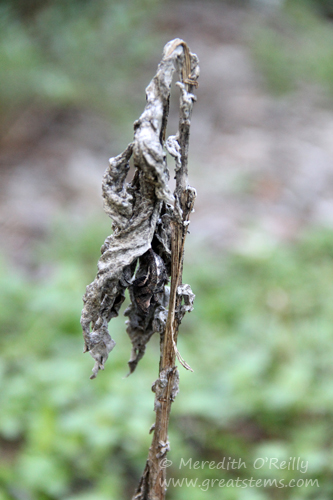
Surprisingly, one caterpillar wandered all the way to the front yard before making its “J” and chrysalis. Of all things, it chose a dead little sunflower as its chrysalis spot. Lucky for it, I noticed it while planting and weeding — I almost yanked the plant away! But I left the caterpillar and the plant, and by next morning, there was the chrysalis. Do you see it in the image above?
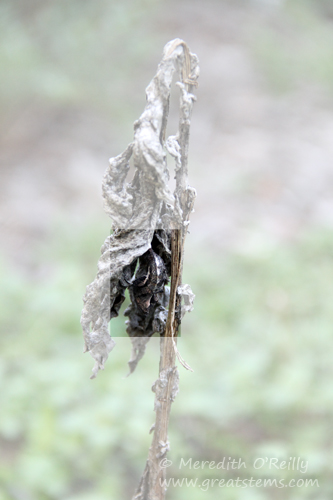
There it is!
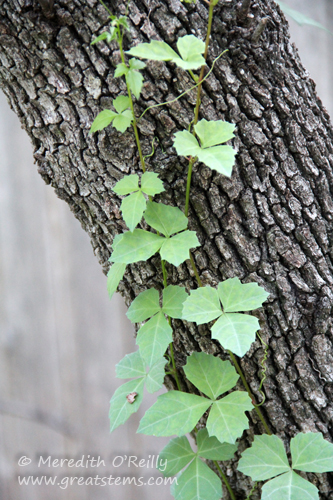
Way back in the backyard, a Cow-itch Vine (Cissus trifoliata) is growing, presumably planted by some bird. While I’m neutral about the vine in general, it turns out that it is the host plant for a couple of special moths found here in Texas, including the Vine Sphinx Moth and Wilson’s Wood-nymph Moth. So of course, I’m letting it stay.
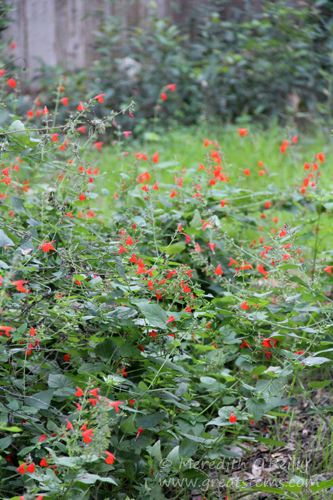
Nearby, Tropical Sage (Salvia coccinea) is king of the woodland area, being allowed to reseed freely. The hummingbirds love this area.
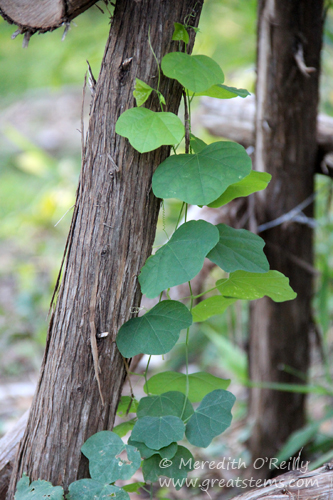
Under other shady trees, I was pleased to see that the Yellow Passionflower (Passiflora lutea) has finally found the cedar trellis we made for it.
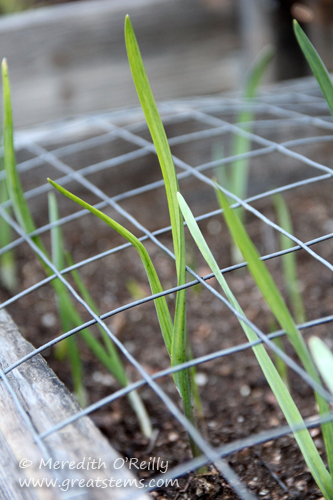
Not to be outdone by the natives, the veggie garden is looking great, too. Fall is so very much my favorite time to plant in Texas. We’ve had to cage a few newly seeded areas, as some nocturnal culprit has been digging into the beds a bit. Luckily, the garlic above does not find a cage an obstacle. This year’s garden includes cauliflower, broccoli, kohlrabi, garlic, shallots, snap peas, strawberries, lettuce, kale, spinach, and carrots, as well as many, many herbs. Loving it.
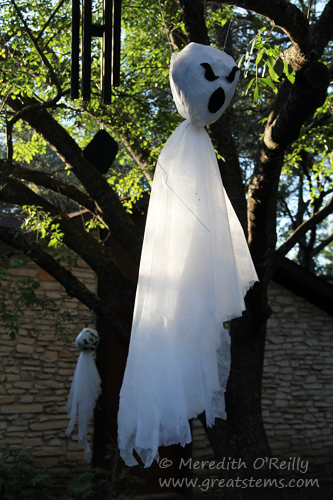 .
.
An error in measuring out garden fabric for one of the veggie beds proved to be a timely mistake. We turned our boo-boo into ghostly decorations. Boo! Boo! Get it?
Wonderful fall. Happy gardener.
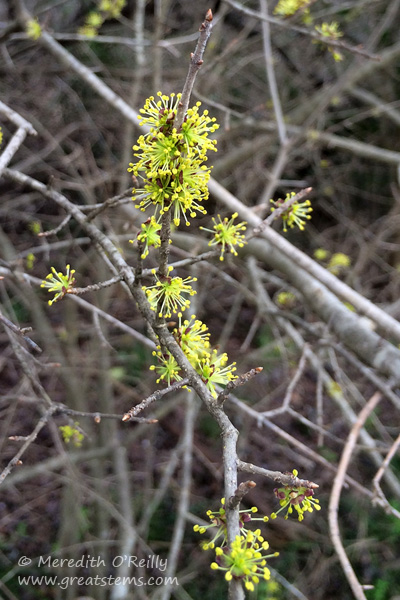
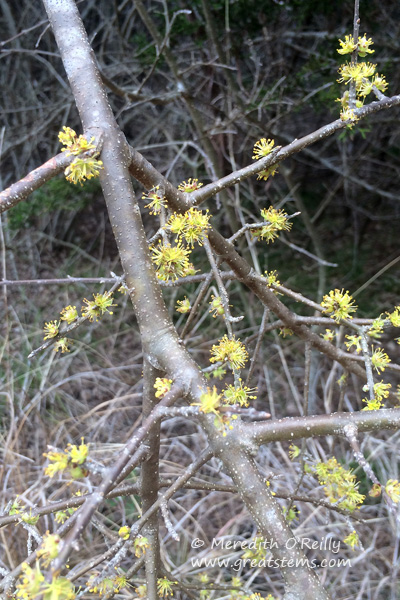
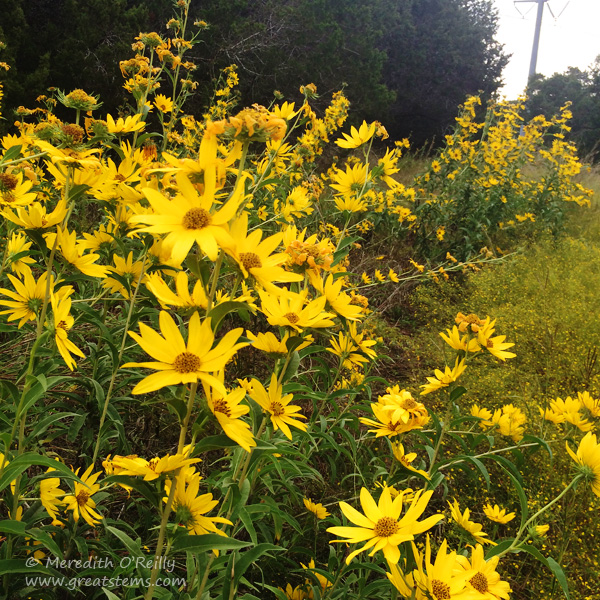
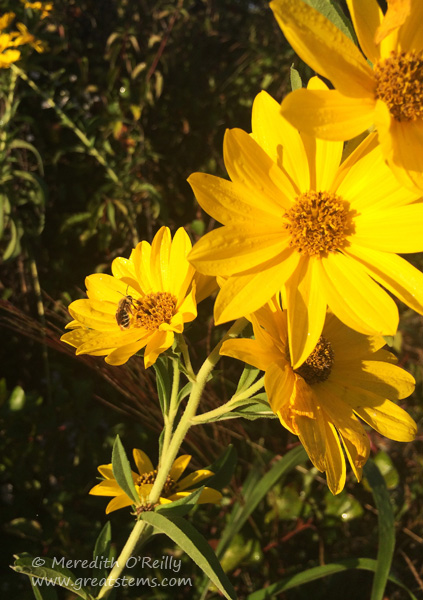
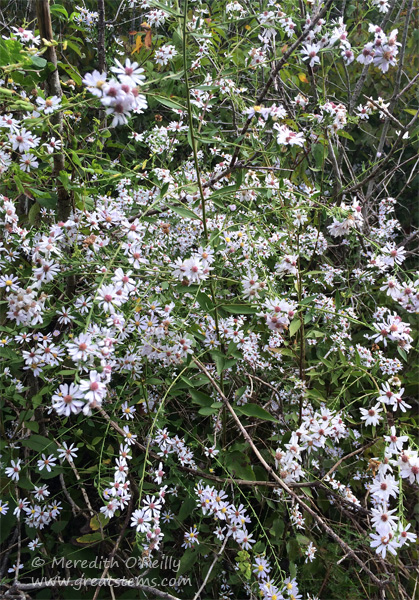
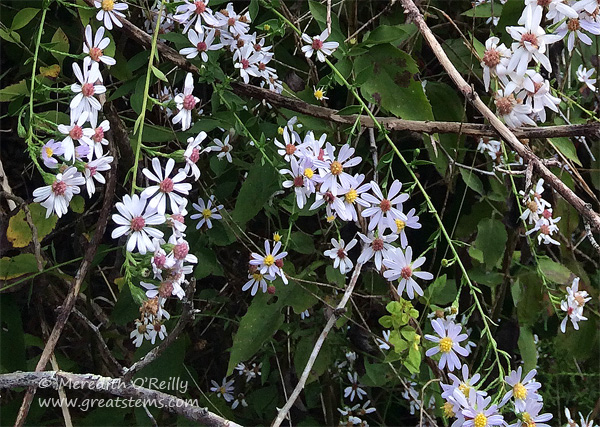
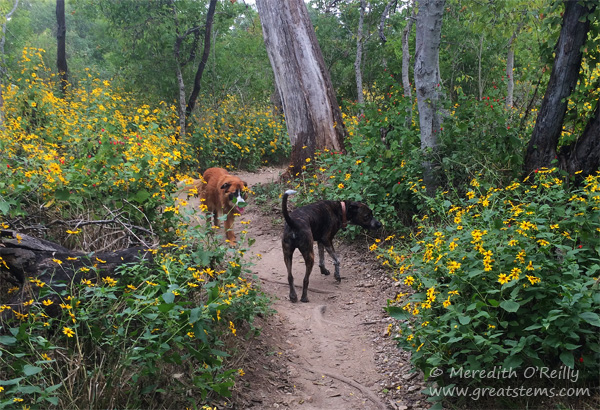
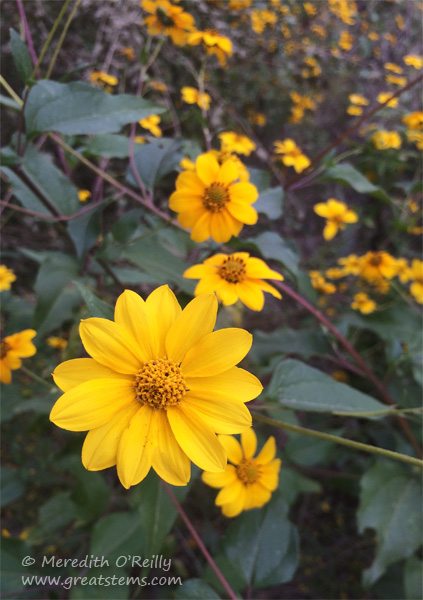
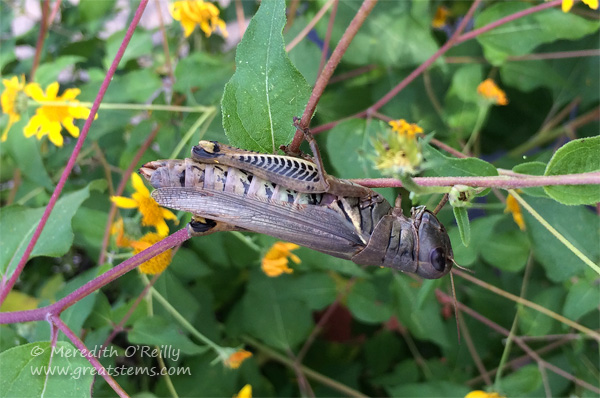
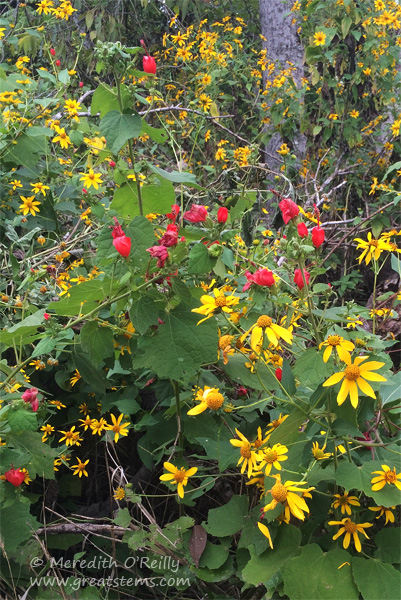
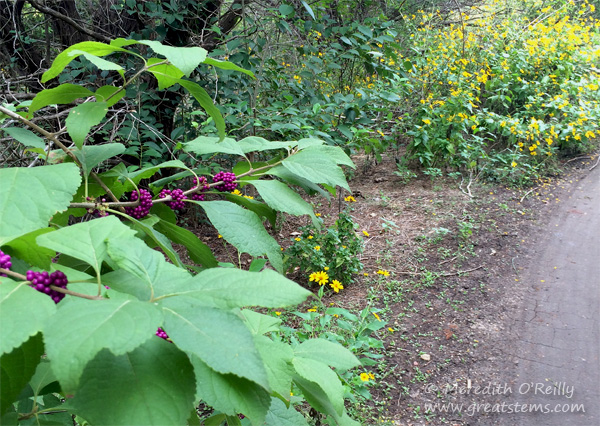
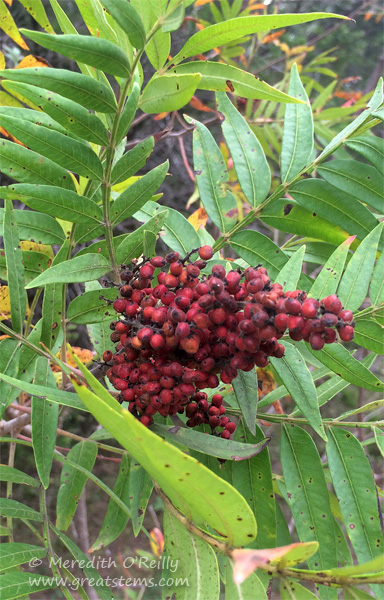
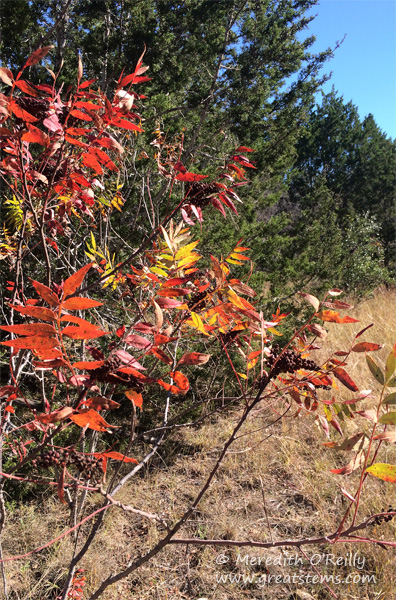
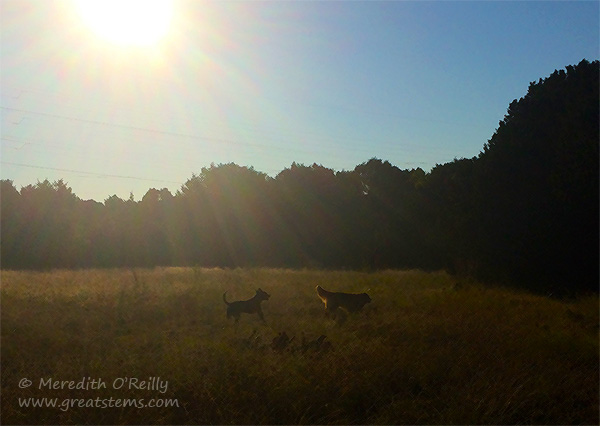
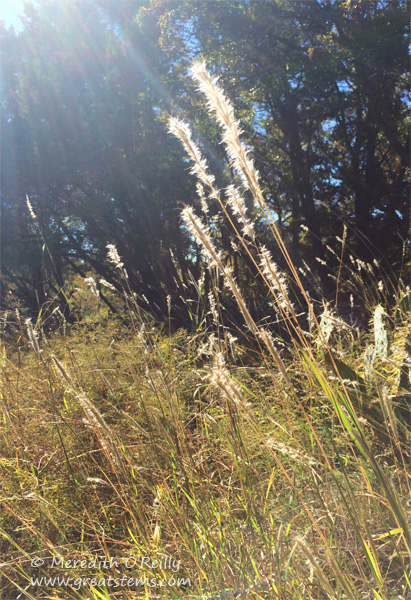
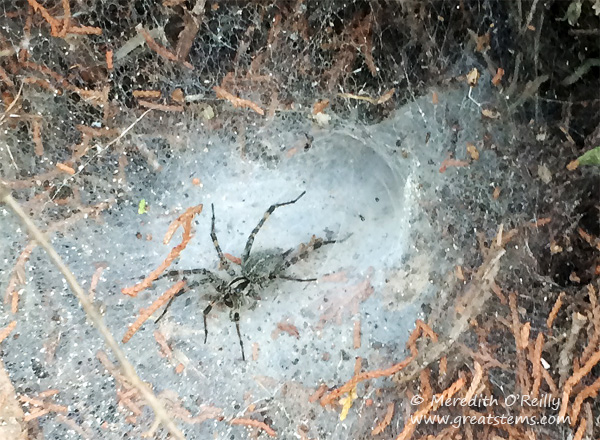
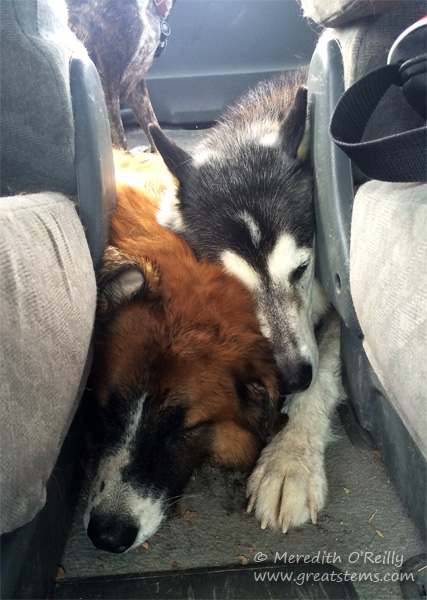
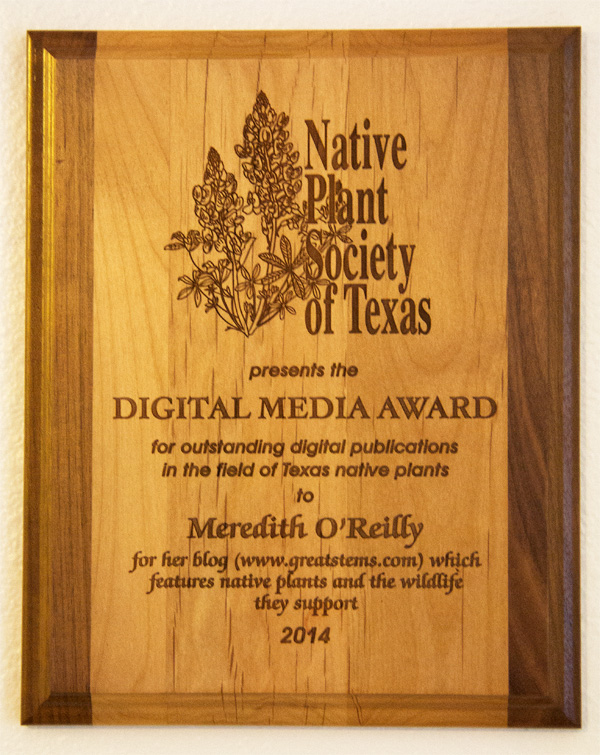
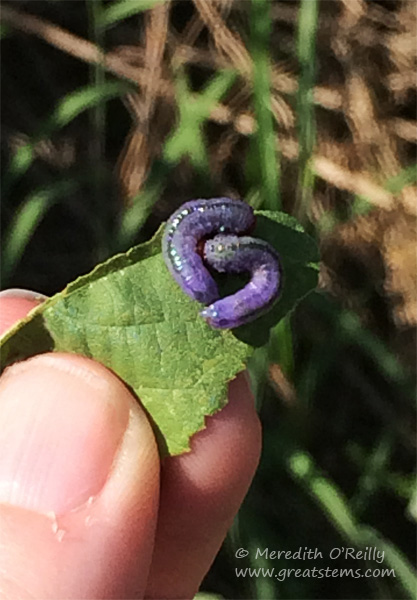
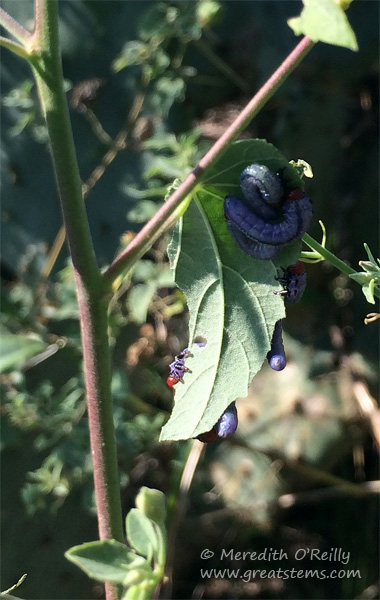
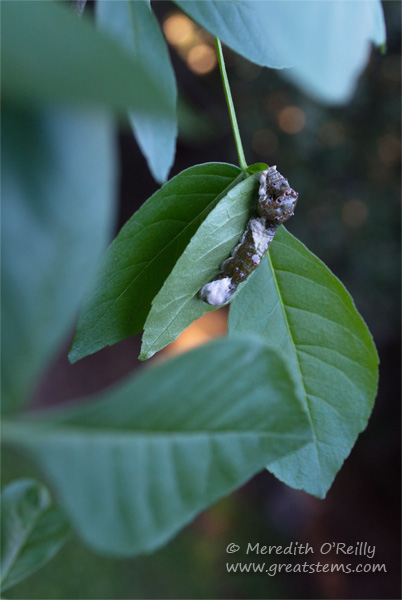 This year we had to transplant that now large Wafer Ash to the opposite side of the yard, and I feared that it wouldn’t survive. But amazingly enough it did, and we have our latest batch of bird-poop caterpillars. These little guys are making me so happy, and I really do feel at the moment like the garden has come full circle — I’m right back to seeing one the favorite fauna species I planted trees for all those years ago.
This year we had to transplant that now large Wafer Ash to the opposite side of the yard, and I feared that it wouldn’t survive. But amazingly enough it did, and we have our latest batch of bird-poop caterpillars. These little guys are making me so happy, and I really do feel at the moment like the garden has come full circle — I’m right back to seeing one the favorite fauna species I planted trees for all those years ago.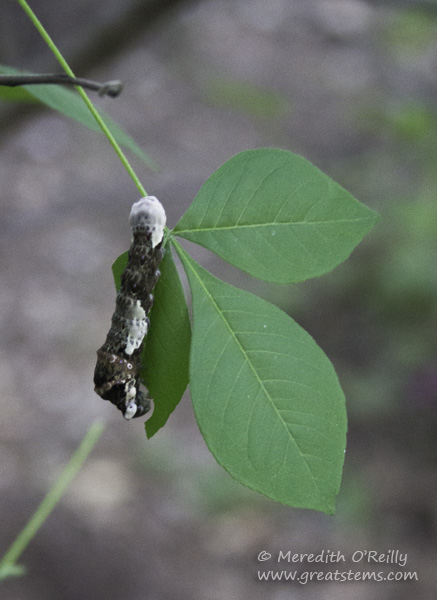 Wafer Ash is a small deciduous tree found in much of the eastern and southern areas of the United States and into Central America. Because it prefers part shade to shade for its light, it serves well as an understory tree. It earned its species name trifoliata for its characteristic three leaflets. Small white flowers in late spring give rise to wafer-like seeds come fall, hence one of its common names.
Wafer Ash is a small deciduous tree found in much of the eastern and southern areas of the United States and into Central America. Because it prefers part shade to shade for its light, it serves well as an understory tree. It earned its species name trifoliata for its characteristic three leaflets. Small white flowers in late spring give rise to wafer-like seeds come fall, hence one of its common names.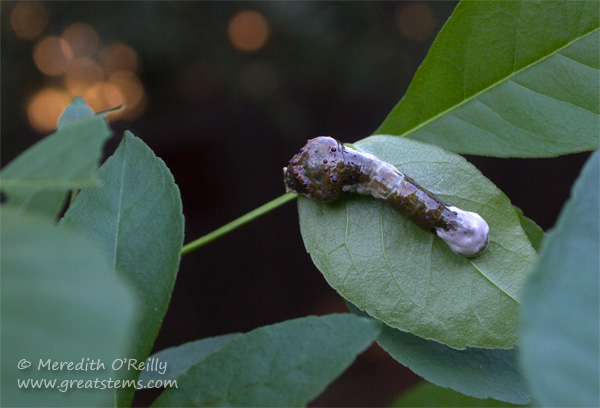
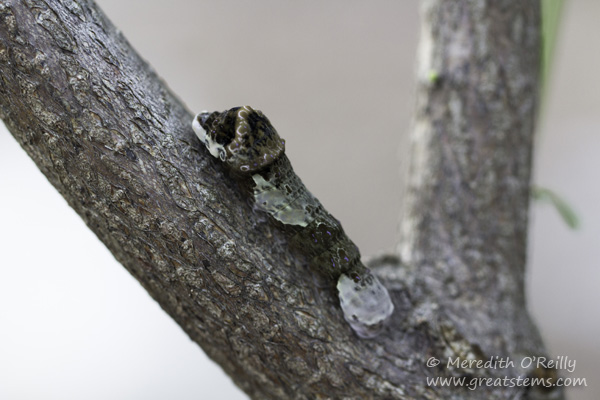 When these caterpillars take a rest, they are often found along the bark or branches of the tree, perhaps for camouflage or to simply avoid predators that might more easily locate them on the green leaves. As if that bird poop appearance isn’t enough to deter would-be munchers!
When these caterpillars take a rest, they are often found along the bark or branches of the tree, perhaps for camouflage or to simply avoid predators that might more easily locate them on the green leaves. As if that bird poop appearance isn’t enough to deter would-be munchers!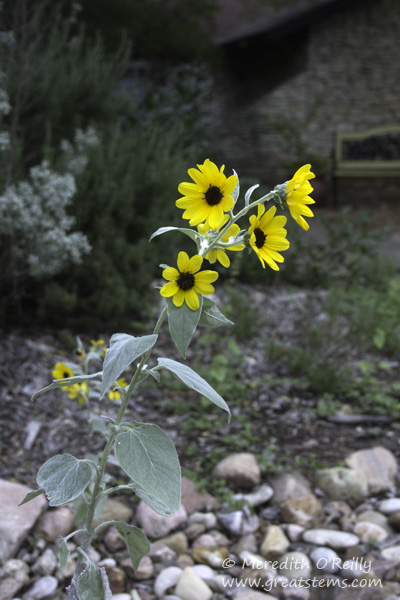
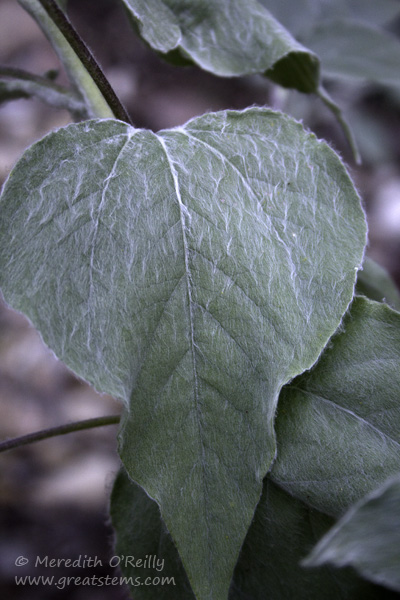
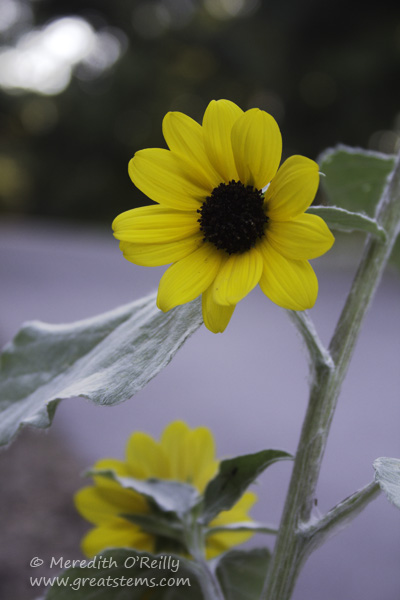
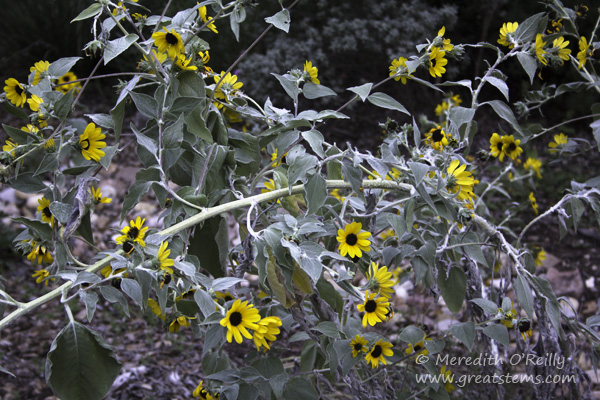
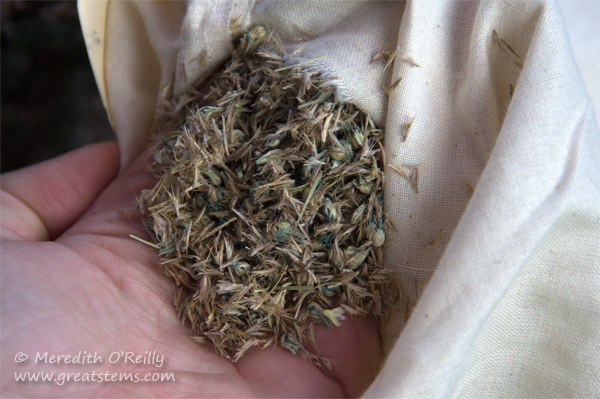
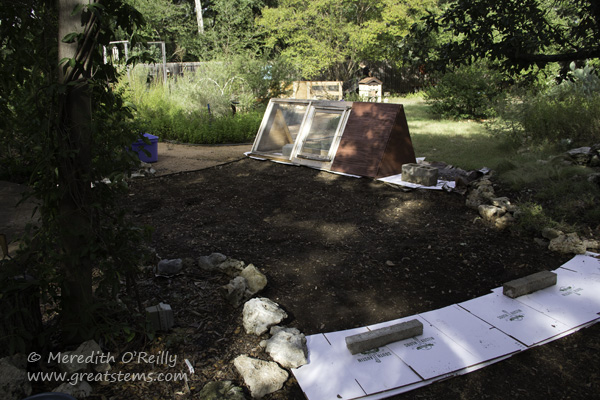
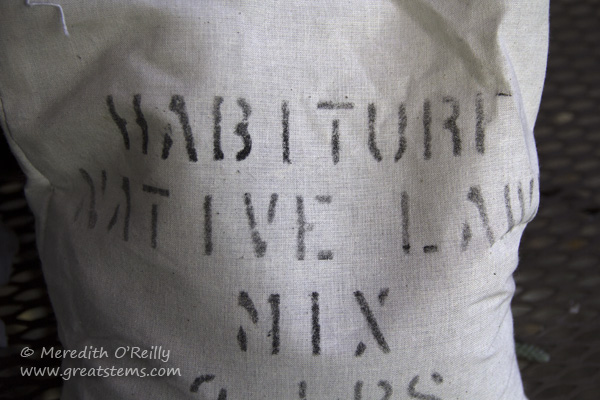 September brought promise of rain for us this year, and it was a fine time to go ahead and seed the Habiturf, a mixture of Buffalo Grass, Curly Mesquite, and Blue Grama seeds. The idea of the three grasses is that diversity of acceptable species has a better chance of crowding out any weeds or Bermuda that might try to establish there, and that diversity helps provide protection from diseases or pests that might otherwise cause problems in a traditional turf lawn.
September brought promise of rain for us this year, and it was a fine time to go ahead and seed the Habiturf, a mixture of Buffalo Grass, Curly Mesquite, and Blue Grama seeds. The idea of the three grasses is that diversity of acceptable species has a better chance of crowding out any weeds or Bermuda that might try to establish there, and that diversity helps provide protection from diseases or pests that might otherwise cause problems in a traditional turf lawn.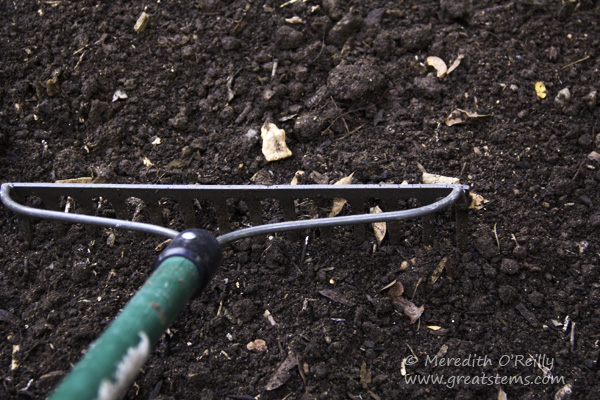 First, we used a dirt rake and shovel to loosen up any compacted areas (necessary after months of dogs and people trampled the cardboard and soil).
First, we used a dirt rake and shovel to loosen up any compacted areas (necessary after months of dogs and people trampled the cardboard and soil).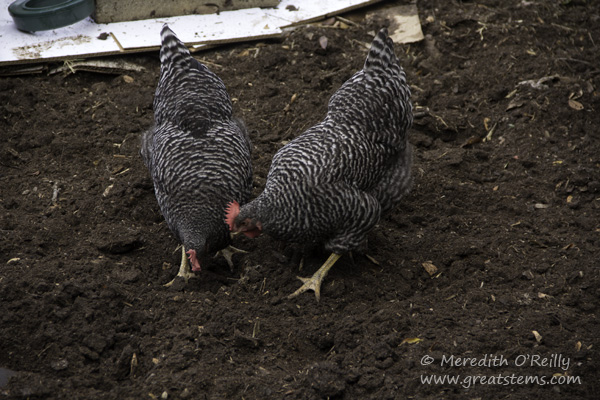 Then we added a light layer of compost and raked it in. The chickens did a better job of mixing it than we did. I highly recommend them as garden helpers and tools.
Then we added a light layer of compost and raked it in. The chickens did a better job of mixing it than we did. I highly recommend them as garden helpers and tools.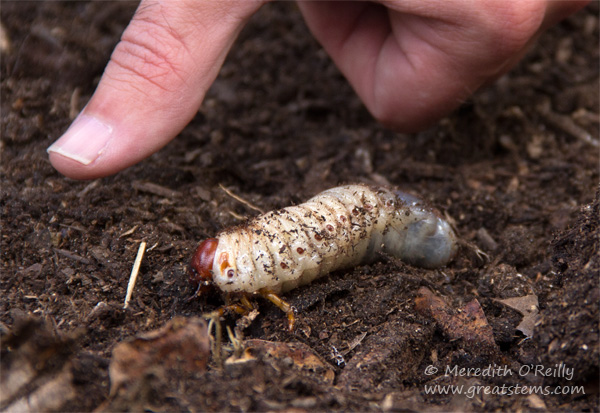
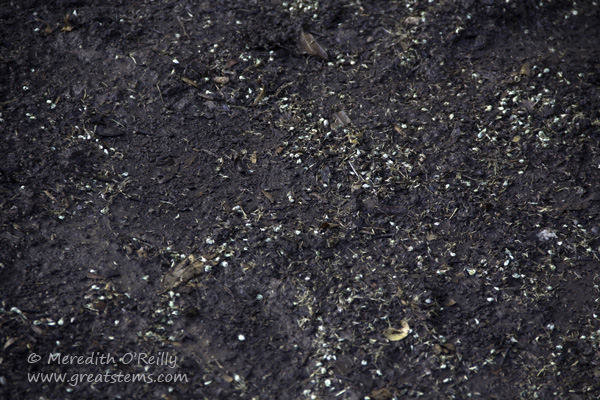 We tamped the seeds into the soil simply by walking on the area. Then I watered thoroughly. The soil had to remain moist for days in order for seeds to germinate — in Texas, this could be the biggest challenge for many would-be native grass gardeners. Fortunately, we had a spell of rain to help.
We tamped the seeds into the soil simply by walking on the area. Then I watered thoroughly. The soil had to remain moist for days in order for seeds to germinate — in Texas, this could be the biggest challenge for many would-be native grass gardeners. Fortunately, we had a spell of rain to help.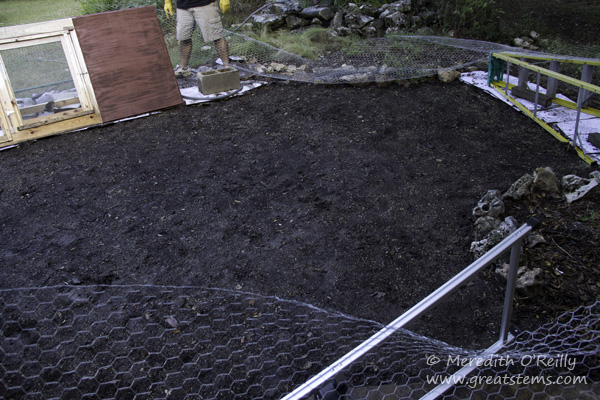
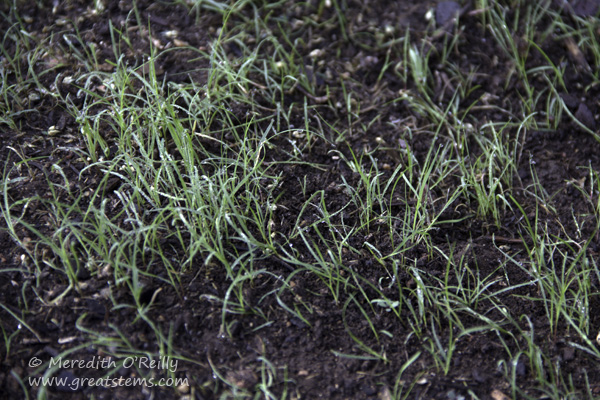 Germination was remarkably quick, thank goodness. The plentiful rain helped with that. Once the seedlings were about an inch or so long, I removed the light row cover and stopped worrying about the chickens getting in there. As the grass grows longer and fills in, I’ll share an updated picture.
Germination was remarkably quick, thank goodness. The plentiful rain helped with that. Once the seedlings were about an inch or so long, I removed the light row cover and stopped worrying about the chickens getting in there. As the grass grows longer and fills in, I’ll share an updated picture.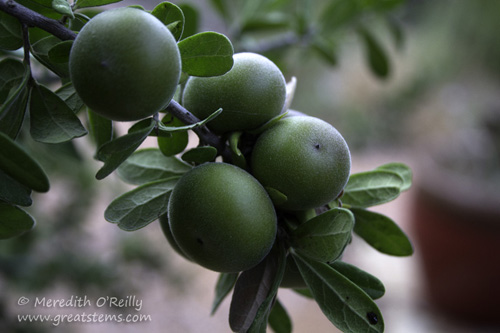
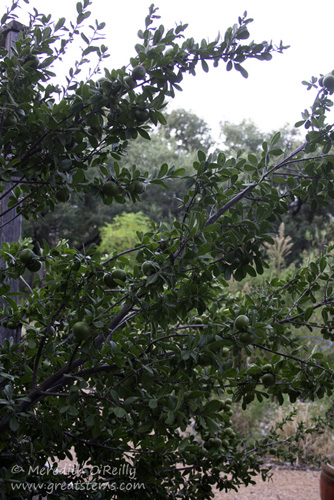
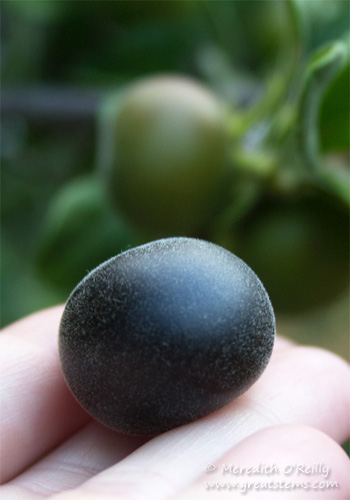 Within a flash it was in my hand. MINE, you squirrels and birds! I was so astonished that I got it first that I almost didn’t know what to do with it. Well, really, there was only one option.
Within a flash it was in my hand. MINE, you squirrels and birds! I was so astonished that I got it first that I almost didn’t know what to do with it. Well, really, there was only one option.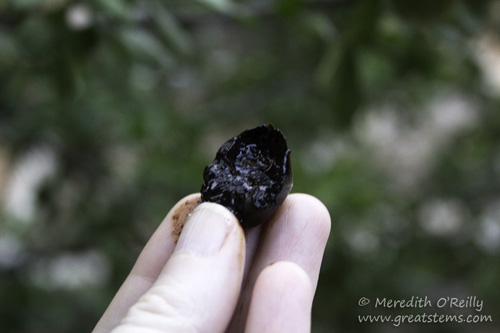


















 .
.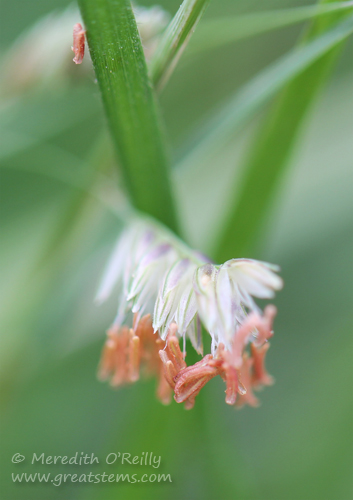 B.
B.  C.
C.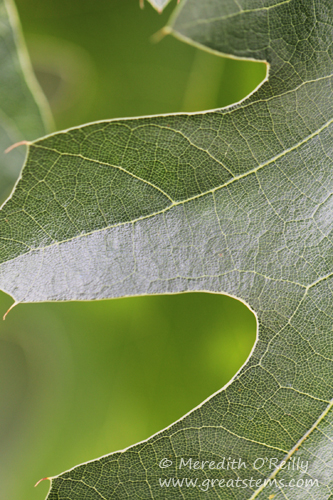 D.
D.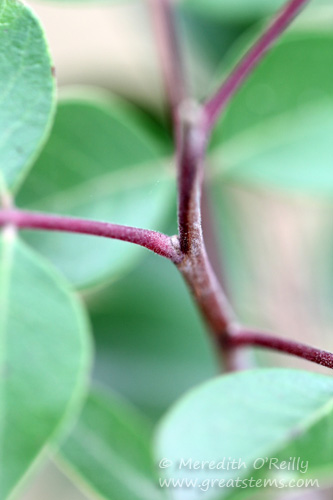 E.
E.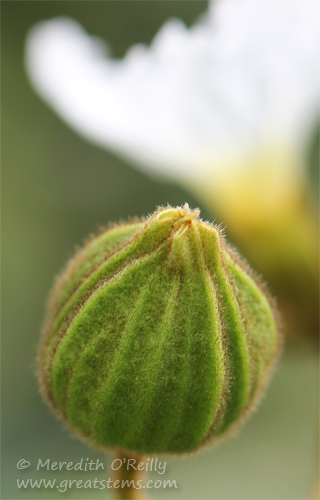 F.
F.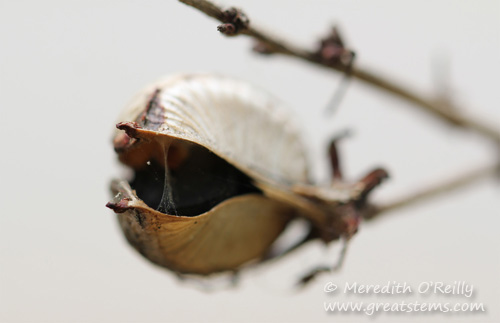 G.
G.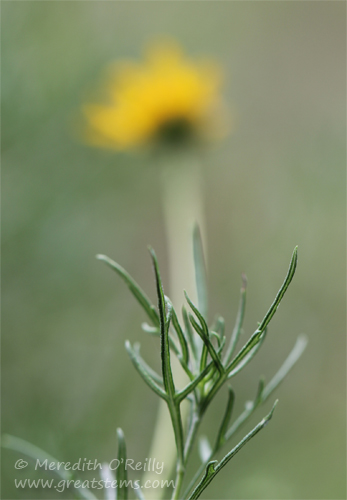 H.
H.